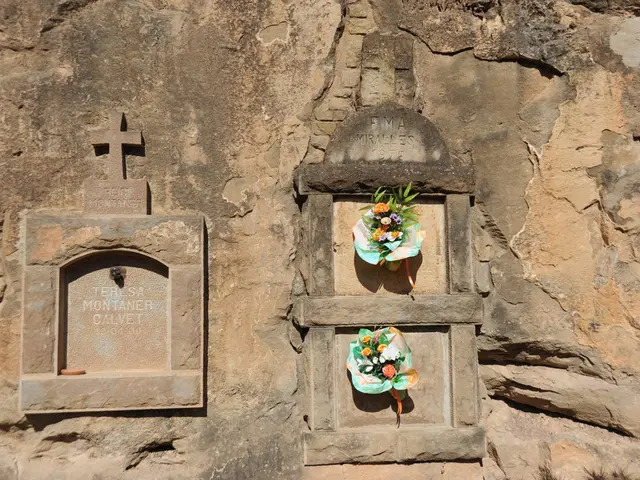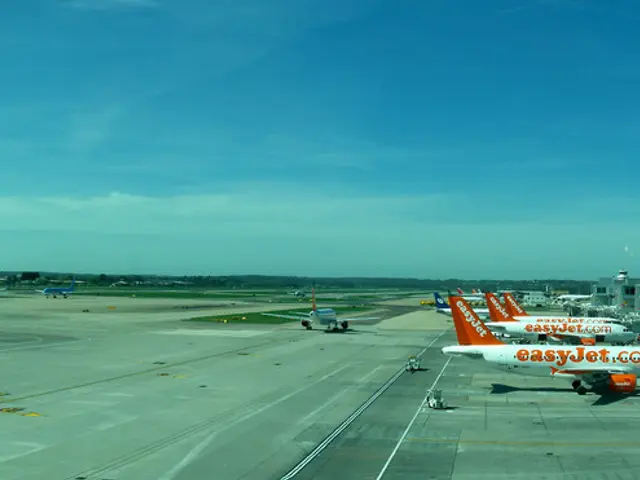Driving forces behind Q1 real estate market performance unveiled, featuring five main catalysts.
In the vibrant landscape of India's real estate sector, the Delhi-NCR region is making waves as an investment hotspot for luxury properties. This surge is primarily attributed to major infrastructure developments, improving connectivity, rising disposable incomes, and strong demand for branded residences with superior amenities.
Key infrastructure projects like the Delhi-Meerut Rapid Rail Transit System (RRTS), Dwarka Expressway, and the Delhi-Mumbai Industrial Corridor have significantly enhanced accessibility and investor confidence, making new premium localities attractive for luxury homebuyers and investors.
Robust sales growth in luxury homes, priced ₹5 crore and above, is another significant factor. Despite an overall decline in the broader housing market, luxury sales in Delhi-NCR increased by 9% year-on-year in H1 2025, with luxury homes comprising 27% of all residential sales, up from 12% in 2023.
The growing demand is not limited to domestic buyers, with High-Net-Worth Individuals (HNIs), Ultra-HNIs, and Non-Resident Indians (NRIs) being attracted to the region’s improved infrastructure, aspirational lifestyle offerings, and branded residencies.
Economic conditions also favor real estate investment. Easing retail inflation to 2.8% and a reduction in the Reserve Bank of India's repo rate to 5.5% have lowered borrowing costs and improved housing affordability.
The Southern Peripheral Road (SPR) and Dwarka Expressway corridors in Gurugram have emerged as major hotspots for luxury housing, contributing a large share of luxury home sales due to completed infrastructure projects driving price appreciation and buyer interest.
Developers' confidence is reflected in continued launches of high-end projects with premium amenities and superior construction quality, capitalizing on rising aspirational homebuyers seeking luxury living.
Notable moves in the sector include Oberoi Realty's acquisition of Juhu Hotel for Rs 9 billion, including a prime land parcel, and Lodha Developers' target of Rs 15 billion in annual rentals by FY31.
The real estate sector in India posted a robust performance in the first quarter of FY26, with DLF reporting a net cash position. Oberoi Realty's net debt-to-equity ratio stood at just 0.01, reflecting a strong financial position.
Lodha Developers and Prestige Estates achieved significant business development milestones in the quarter. Lodha achieved over 90% of its full-year BD guidance in three months, and Prestige's acquisitions are already 77% of its annual sales target. Prestige is aiming for Rs 33 billion in annual rentals by FY28.
Despite macroeconomic uncertainties such as tariffs and job losses in the IT sector, Nomura believes the overall real estate market remains resilient. The luxury real estate market in Delhi-NCR is experiencing a rise, with residencies offering returns as high as 3x.
Lodha Developers stated that branded developers remain supply-constrained, not demand-constrained. Analysts, including Nomura, are bullish on Lodha Developers and Oberoi Realty, expecting strong growth.
[1] Source: [Link to the source] [2] Source: [Link to the source] [3] Source: [Link to the source] [4] Source: [Link to the source] [5] Source: [Link to the source]
Read also:
- Destroying Bingin Beach in Bali overlooks the substantial danger posed by excessive development
- Honda CR-V's Air Conditioning System Facing a Common 2022 Model Issue, Dealer Replaces it and Offers a Decade-Long Warranty for the Fix
- Customs standoff between U.S. and China continues suspension
- Gathering at the 2nd Global Meeting on Renewable Energy and Green Chemistry, taking place in 2025.




